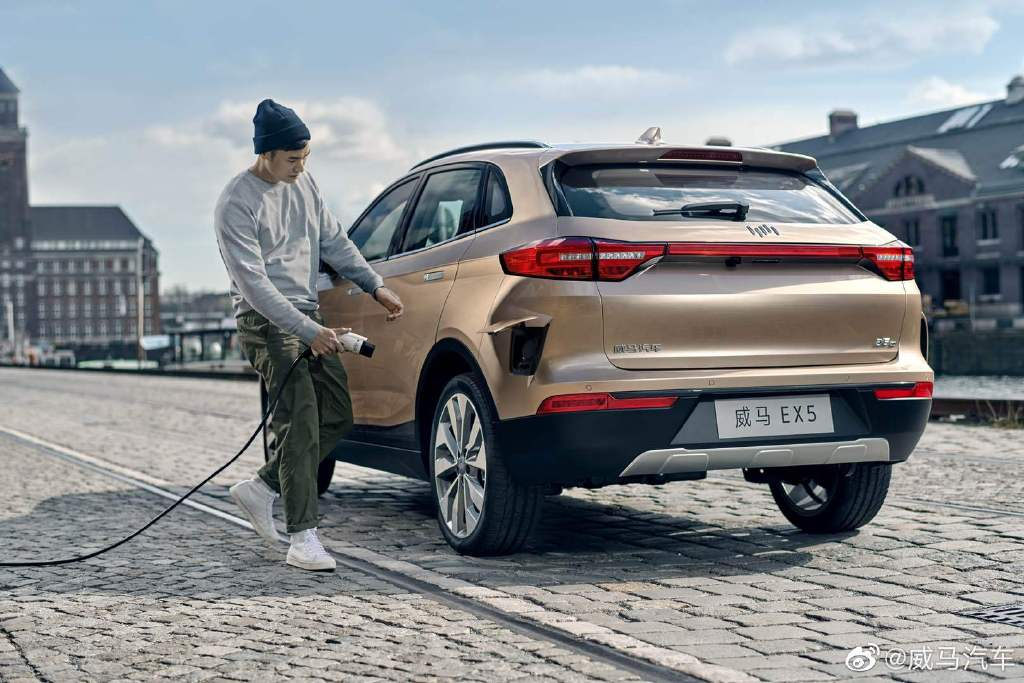Let me begin by introducing myself as a gasoline car owner. Prior to this, I had limited experience with pure electric cars. It seems that the WEY EX5, in terms of both price and vehicle positioning, is aimed mainly at first-time electric car users who are currently driving gasoline cars. Therefore, I will focus on reviewing the EX5 from the perspective of a gasoline car user.
First, let me introduce the test drive car. We drove the 400 Extra Innovation version, which is the high-end version with an NEDC range of 400 kilometers. The price after all subsidies is 139,800 yuan, and we also selected five optional packages:
- Nappa luxury seat package
- Experience upgrade package
- APA automatic parking assist
- 18-inch low-drag wheels
- Hidden induction door handles
The price with these options is around 150,000 yuan.
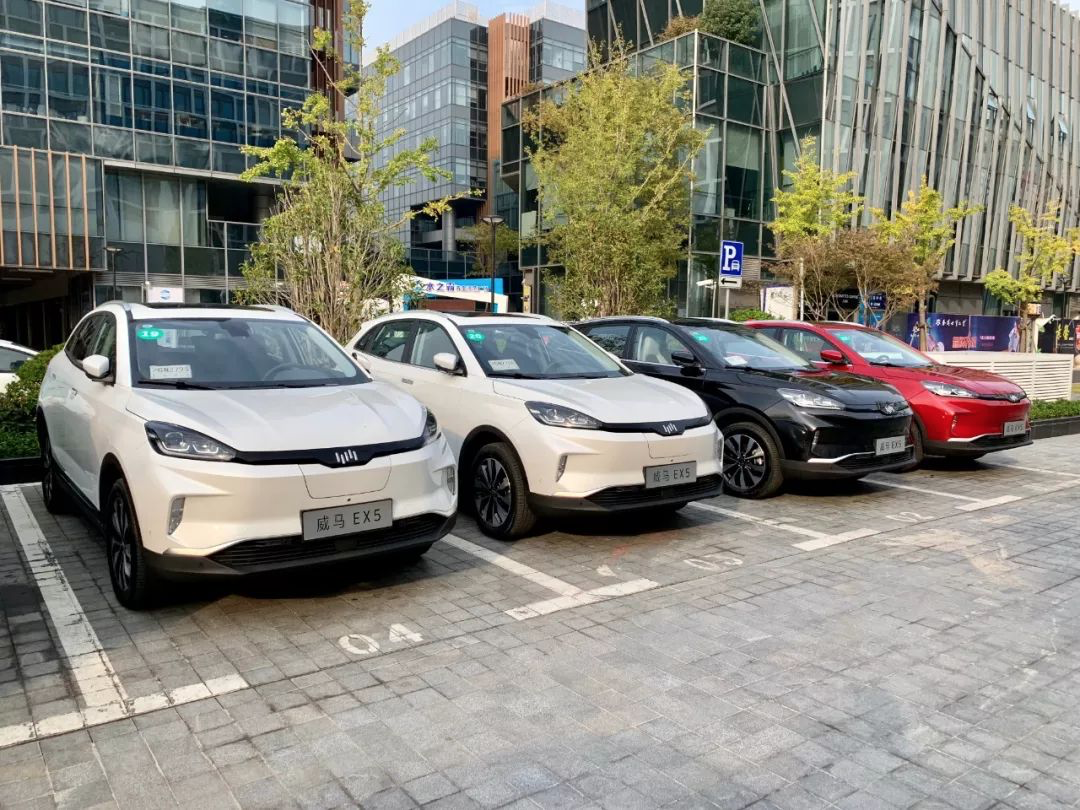
Exterior
After reviewing the vehicle, let’s start with the exterior. Before seeing the actual car, I thought that the front of the EX5 was really fat and out of proportion. However, when I saw the actual car, although I still feel that there is room for improvement compared to the leading players of independent brands, it is acceptable.
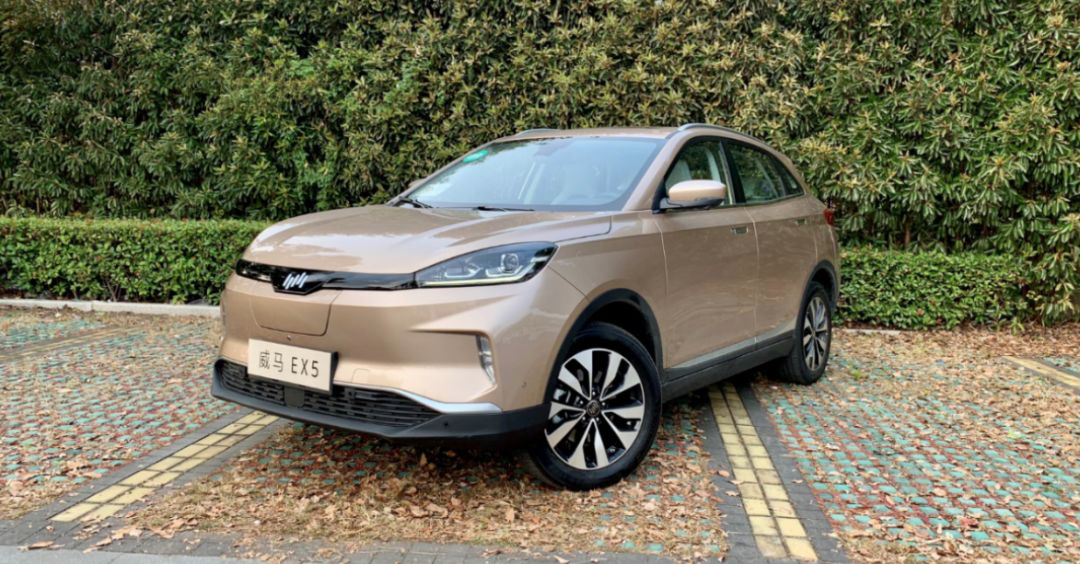
Although the front uses a fully enclosed design, the black trim strip in the middle serves as a disguise for an air intake grille, so the visual effect is not particularly uncomfortable, and the wind resistance coefficient is 0.3 Cd.
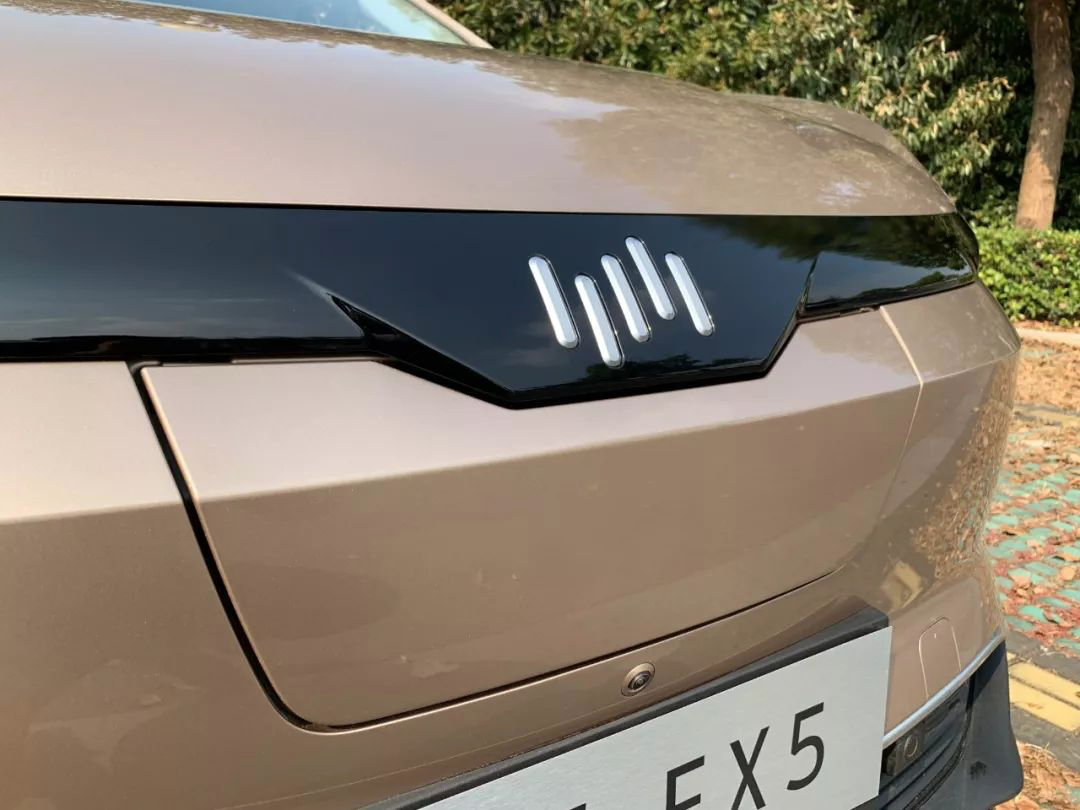
Below the logo is the fast charging port. Although the cover plate gap is not large, it still affects the visual effect. By the way, although many electric cars put the fast charging port at the front of the car, it does not necessarily mean that this is a good design. On the one hand, when using fast charging, you have to plunge into the parking space, which is not very convenient in crowded environments. On the other hand, the impact of even a slight rear-end collision on the port is unavoidable.
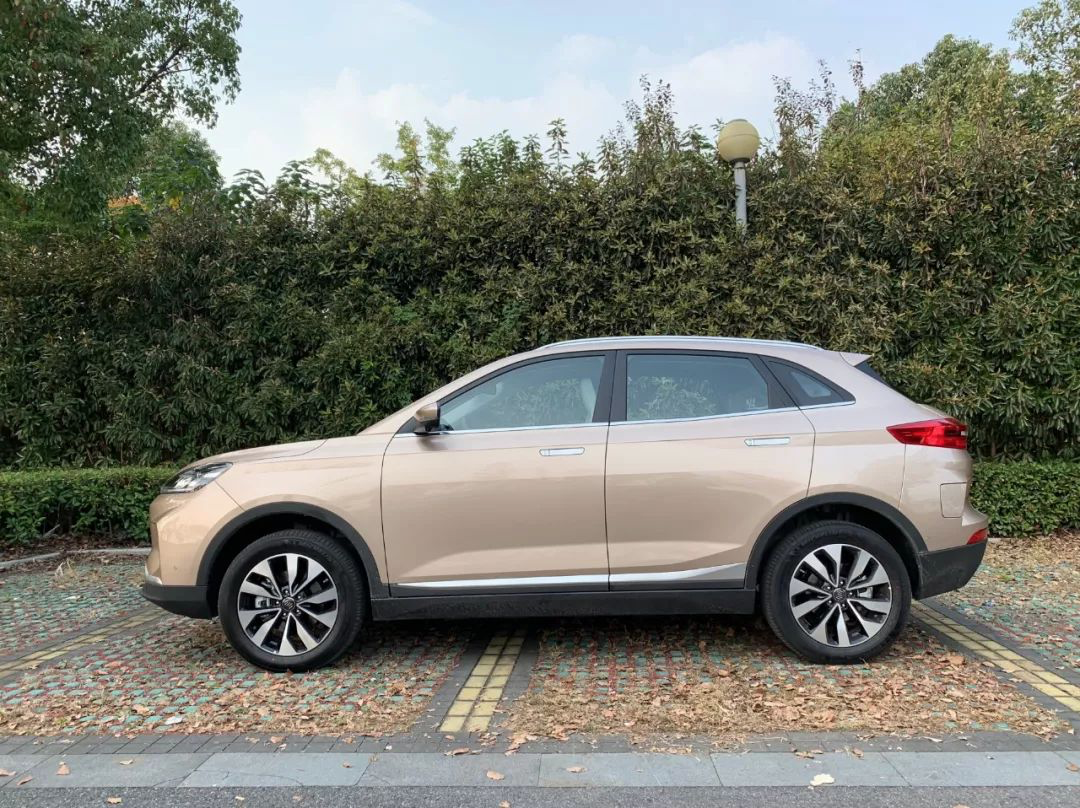
There is nothing outstanding on the side of the car. The body looks thick and the windows are relatively narrow. The door handles use the same hidden handles as most electric cars, which come with a mechanical lock by default and can be upgraded to an electric induction lock. The slow charging port is on the left side of the tail section.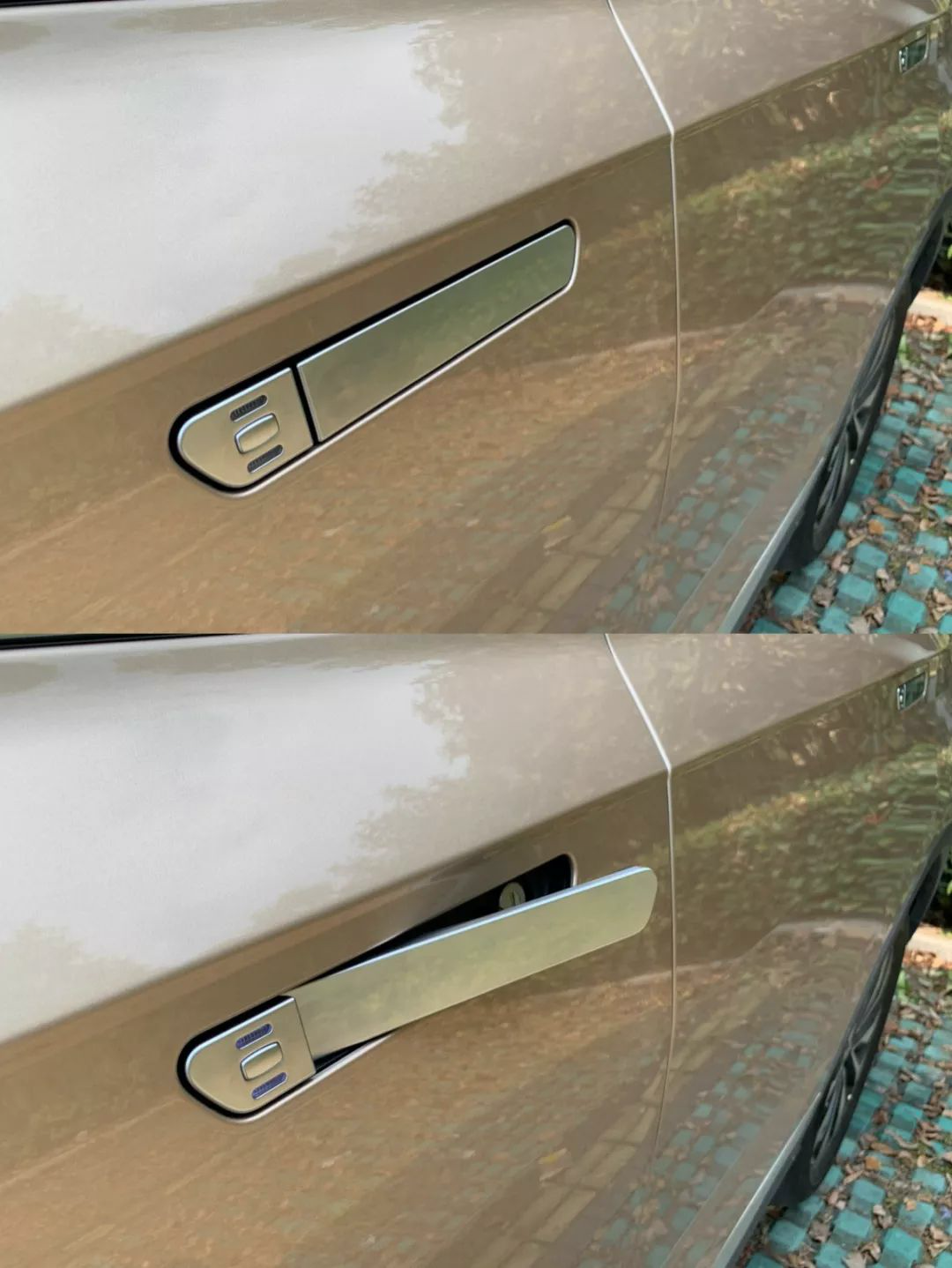
If the induction door handle is installed, pressing the small button on the door handle while the vehicle is unlocked will cause the handle to slowly pop out. This process feels like a “ritual,” but pressing the button requires waiting half a second to a second, which forcibly interrupts a smooth boarding action caused by the electric door handle. Fortunately, the door can still be opened manually on the basis of electric opening. Later, I basically used manual opening.
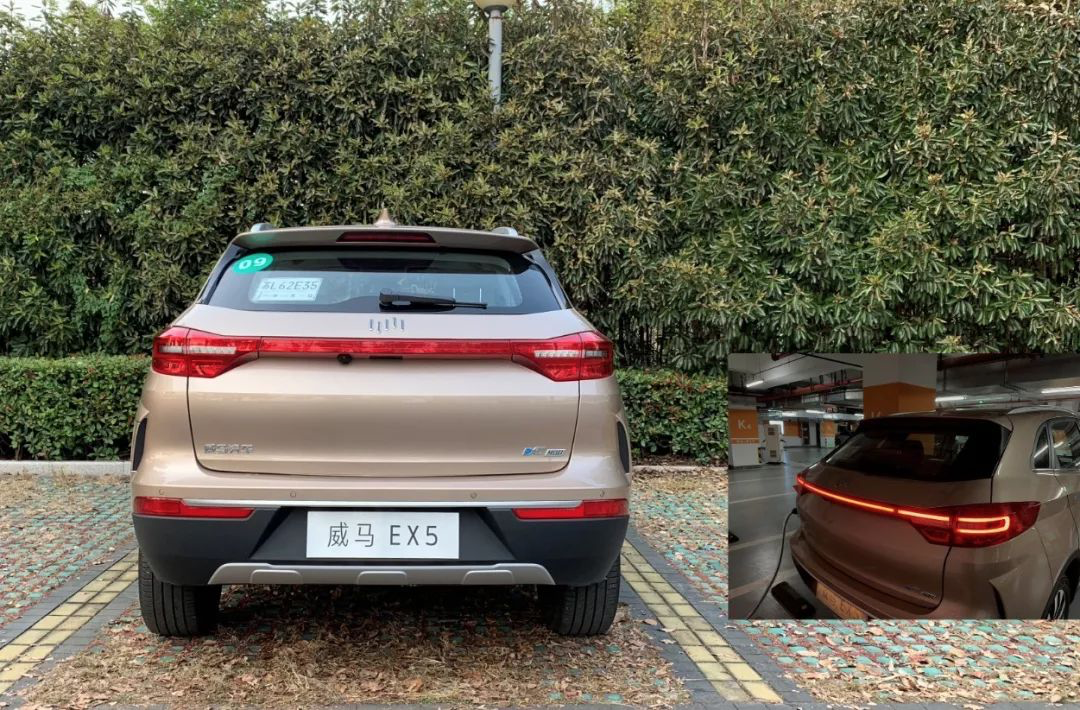
The tail design is ordinary but contemporary. The through-style taillights are also a mainstream and safe design, which looks good when illuminated at night. Both the headlights and taillights are full LED headlights.
Interior Design
As for the interior design, I won’t make too much comment, as everyone has their own opinions. Two large screens have become a standard configuration for new cars nowadays, and they also have many functions, which we will discuss separately later. Although there is a huge and functional central control screen, the EX5 still retains some commonly used physical buttons. Unfortunately, the physical button area on the left side of the steering wheel panel is not well designed.
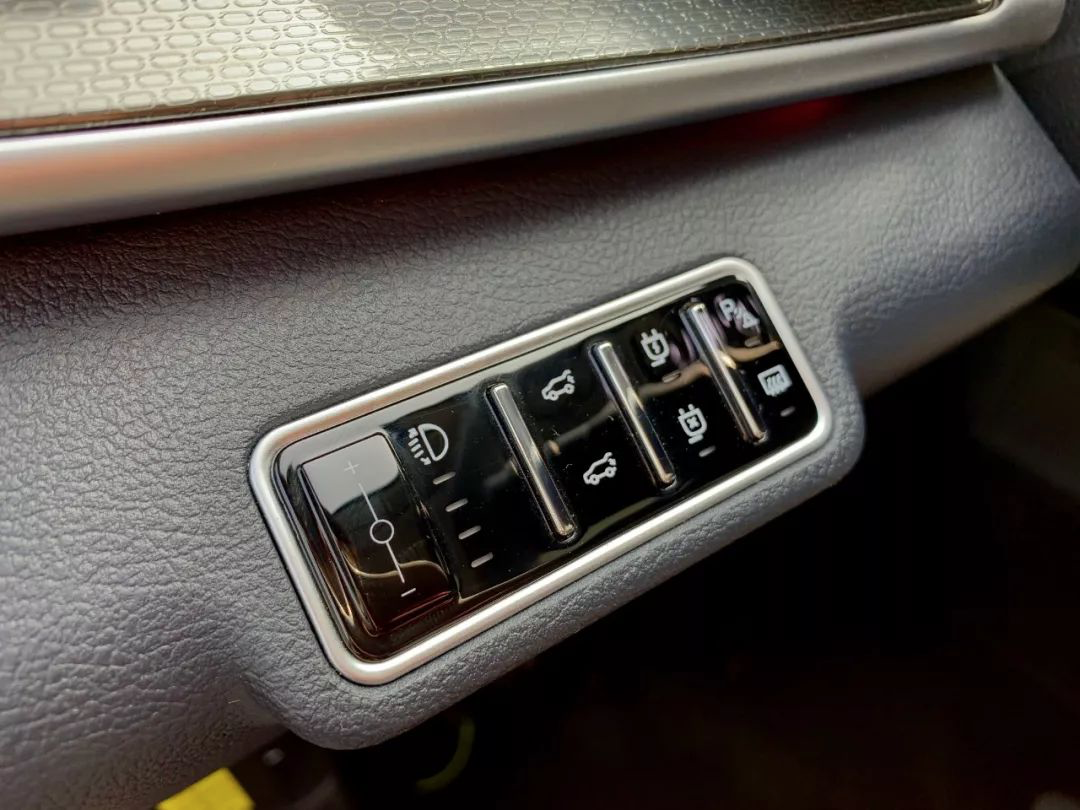
Although there are four rows of evenly-sized buttons, only the leftmost headlight height adjustment is touch-sensitive. The next three rows, which are equipped with chrome-plated trims, are physical buttons, which is a very counterintuitive design.
One of the buttons, similar to the plug logo, is not the switch for the charging port, but the lock and unlock function for the slow charging port. After inserting the charging plug, it can be locked to prevent accidental disconnection and charging delay. This function is only available for the slow charging port, and it is not supported on the fast charging port. According to the manufacturer, on the one hand, the usage environment of most users is for slow charging, and the frequency of using fast charging is low; on the other hand, slow charging takes a longer time, so adding a lock is more reassuring. Since fast charging is very fast, most car owners may not leave their cars during charging, so there is not much demand for locks on the fast charging port.
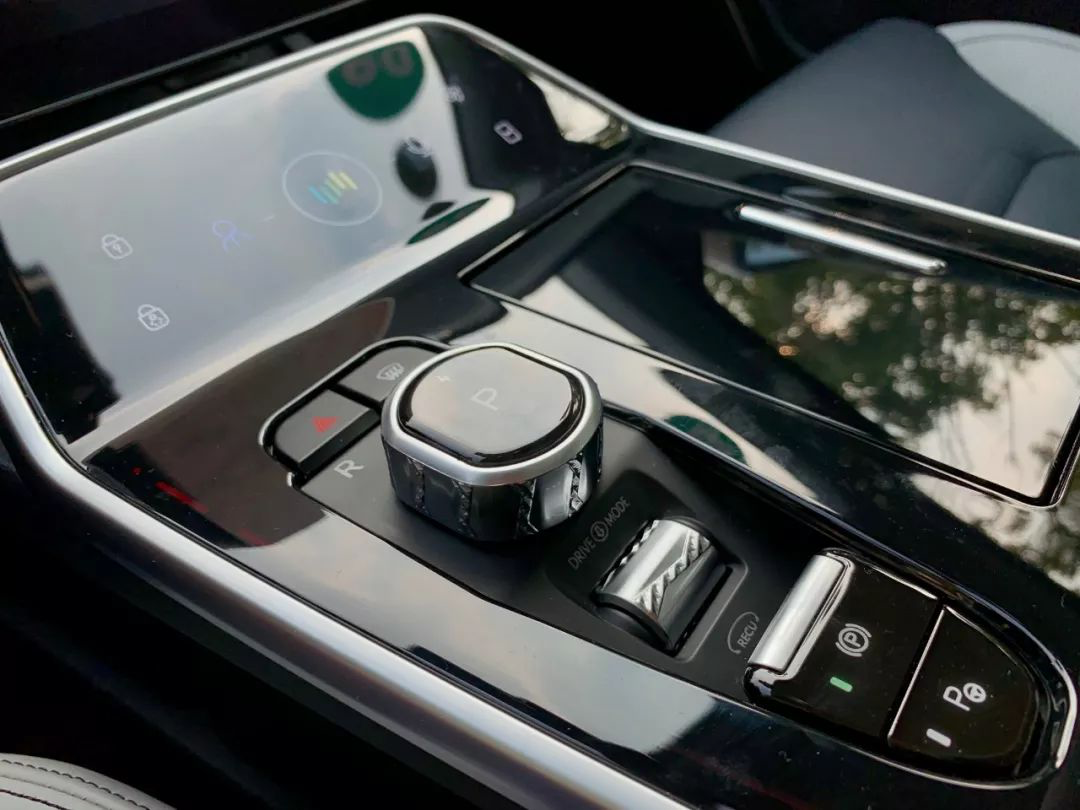
In addition to the multifunction buttons on the steering wheel, there are also physical buttons in the center console area. Let’s talk about the shifting knob and the driving mode/energy recovery roller behind. These two commonly used parts have a strong plastic feeling and relatively mediocre damping, which also exists in the door handles when opening, with too much clearance and too light damping.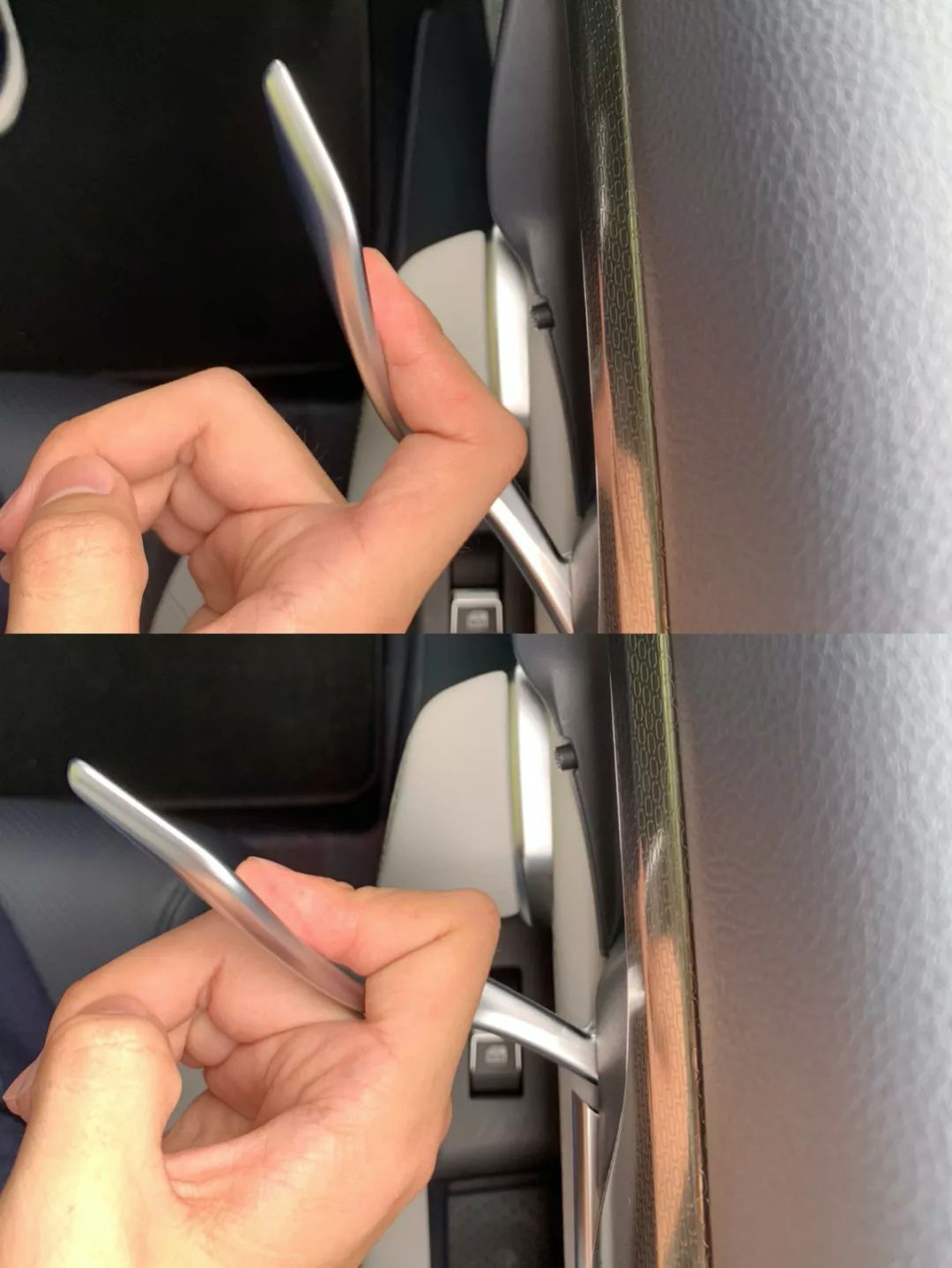
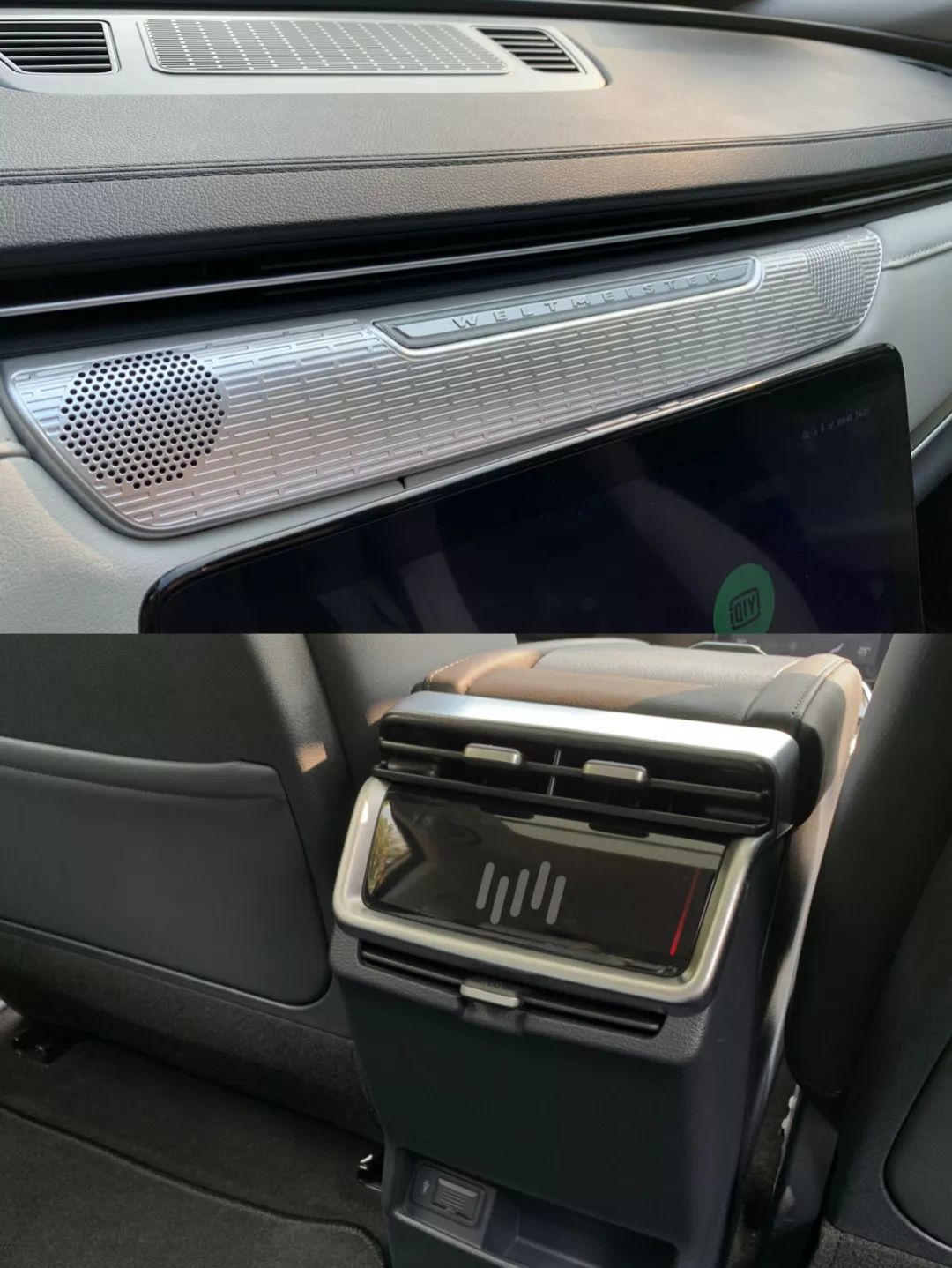
The front air outlet of the car adopts a through-type air outlet, and the direction of air discharge is electronically adjustable through the central control screen. Meanwhile, the air outlet of the rear air conditioning cannot be adjusted, only the opening and closing can be adjusted.
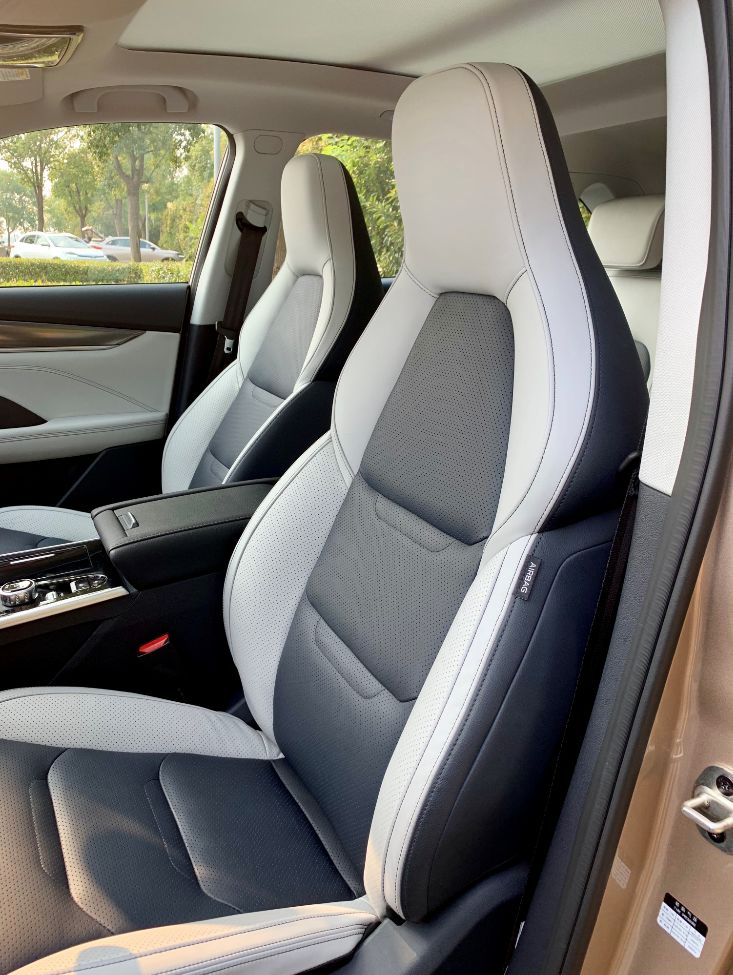
The interior of our car is designed with a space gray color, and the black and white bucket seats look very beautiful. The Nappa leather feels great, but in terms of comfort, the wrapping is average and the hardness is moderate. In the normal sitting posture, the top of the one-piece fixed headrest is in contact with the occiput part of my head (I am 173 cm), and under the bumpy road conditions, the back of my head will continuously collide with the top of the headrest, and there is no support below the back of the head to the upper shoulder. Although the seat can be adjusted to the lowest position, the height is still slightly high, but this seems to be a common problem for most pure electric cars.
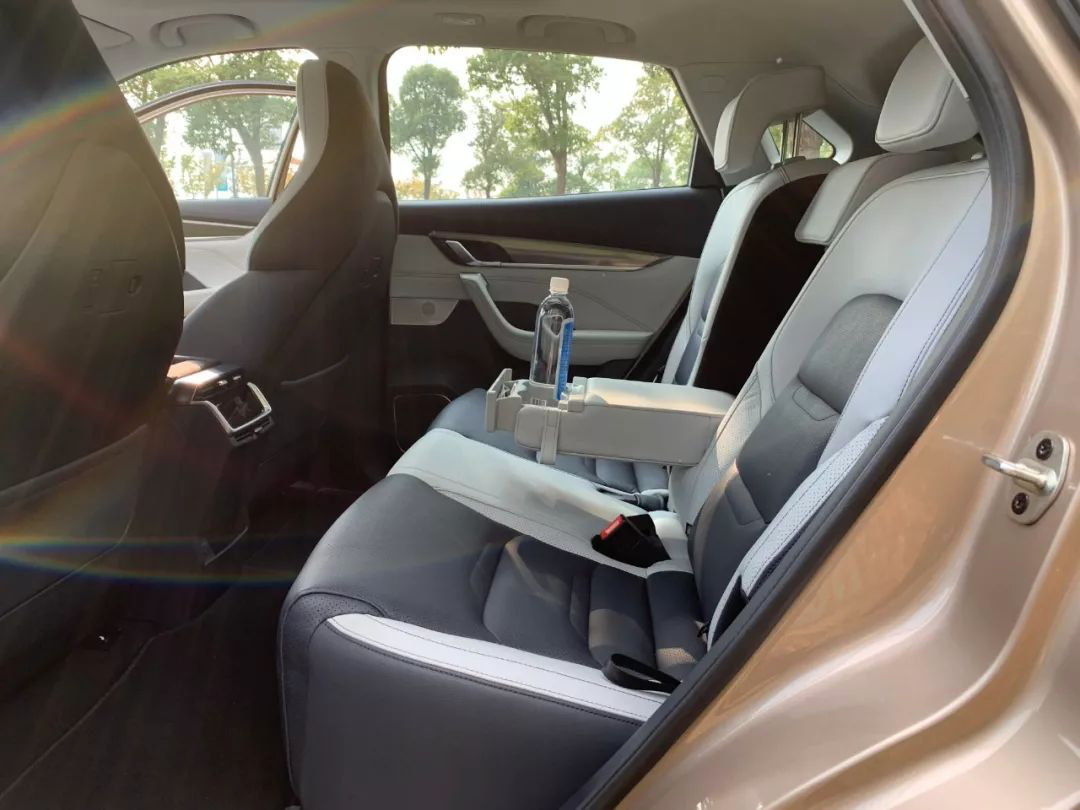
There are two levels of adjustment for the rear seat angle. In my personal opinion, the first level is too straight, and the second level is just right. The comfort of the rear seat is moderate. Although the rear seats of the WM are already very thick, due to the presence of the battery pack, friends with long legs may experience some discomfort during long-distance travel. It’s worth mentioning that the rear floor is flat without any bulges, but the bulges exist on both sides of the car body.
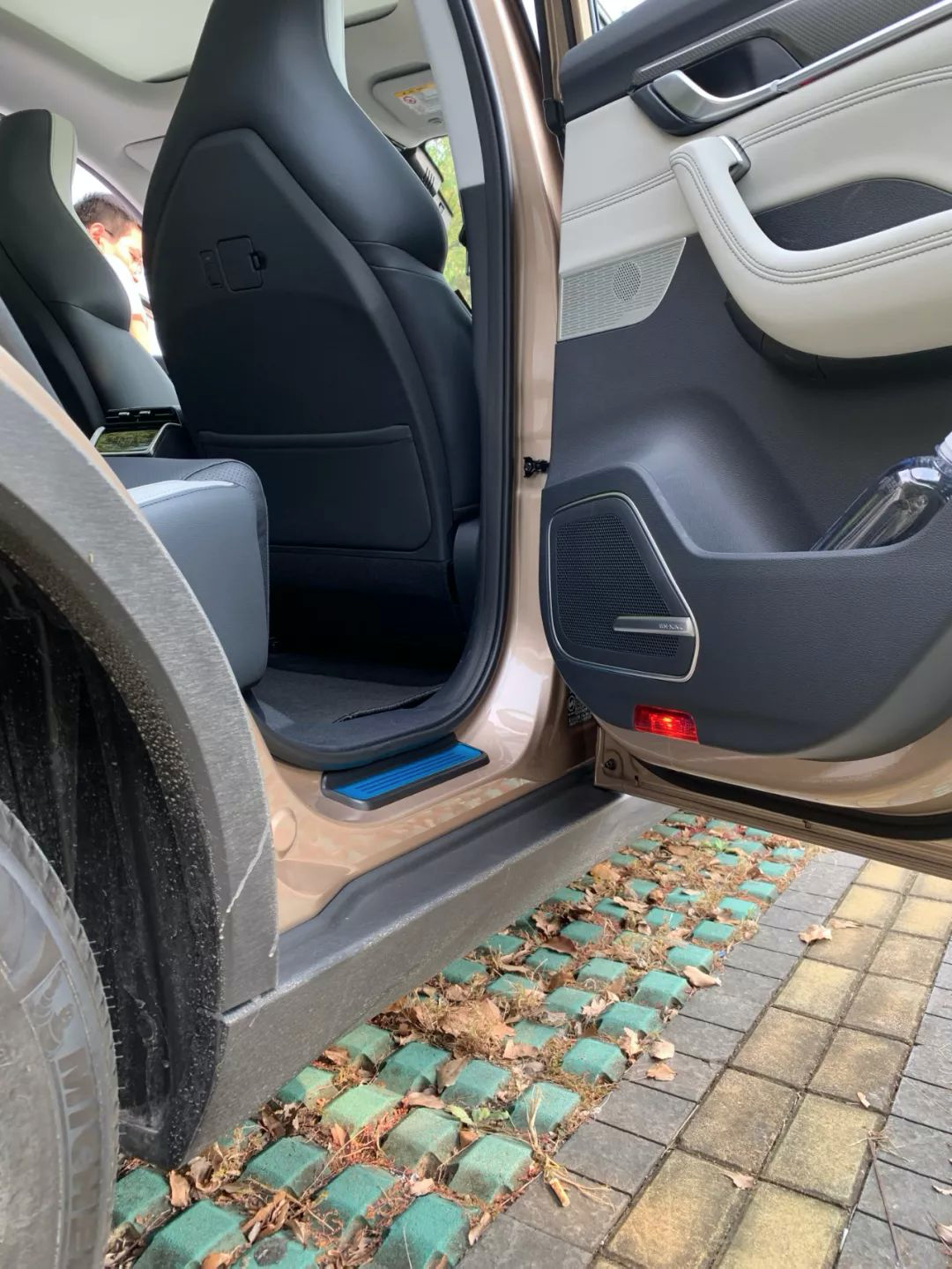
The black bulge on the side of the car body is relatively prominent, and the manufacturer also realized the problem. This bulge was designed for safety considerations to strengthen the body rigidity by adding an additional reinforcement on both sides. However, it was discovered during use that it can be scratched when getting off the car, which to a certain extent affects the experience of getting off.
Especially praiseworthy is that, in the era of electronic devices, WM fully considers everyone’s charging needs by directly placing 5 USB ports and a 12V power supply in the front row and 3 USB ports in the rear row. There is also a 12V power supply in the trunk. Thus, the entire vehicle has 8 USB ports and 2 12V power supplies, and one does not have to worry about the lack of charging ports anymore, and the charging speed is also fast!
Storage Space.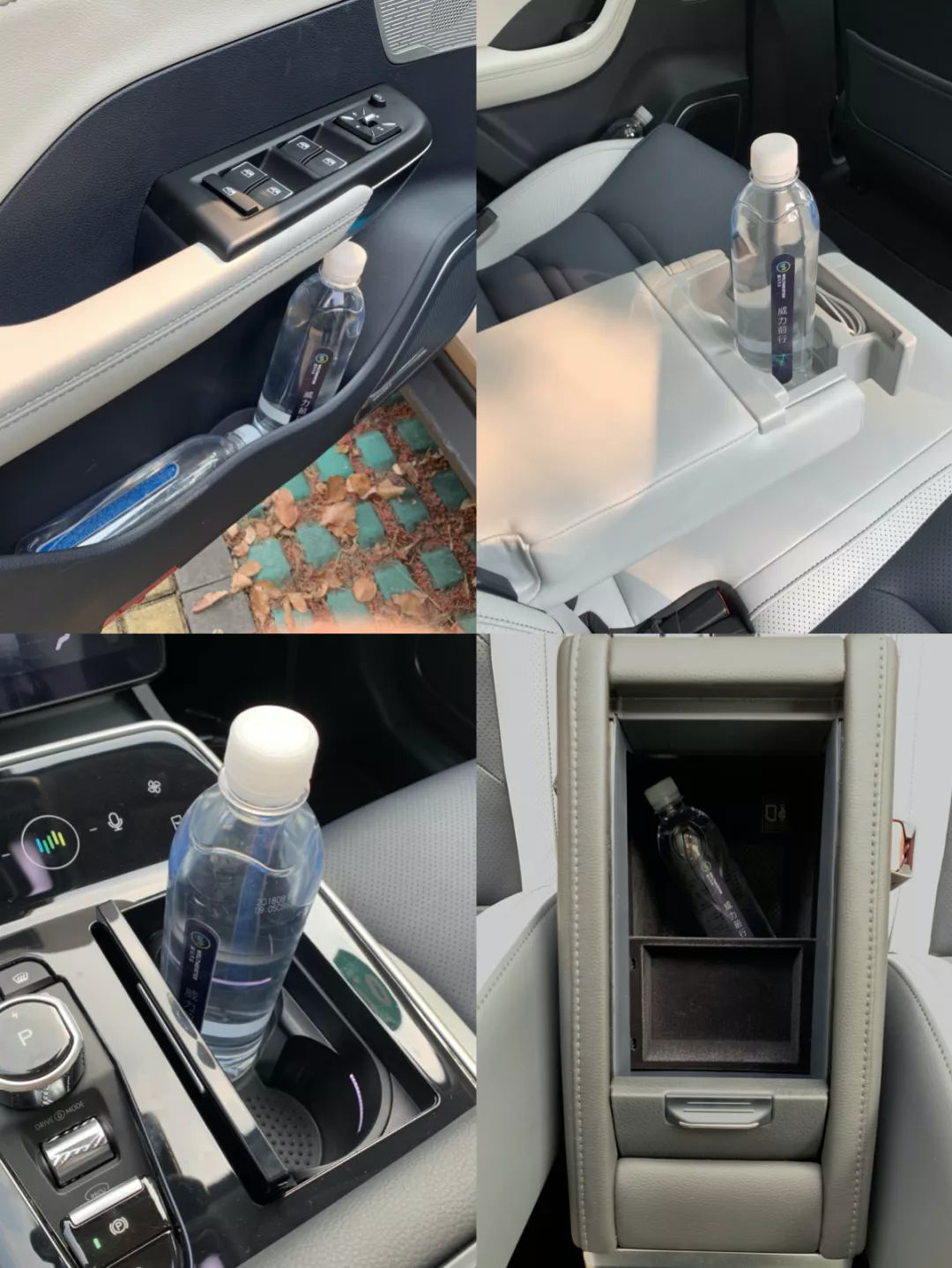
Each door panel has a space for drainage. Both front and rear armrests have two cup holders, which can also be used to hold mobile phones and miscellaneous items. The central armrest is fixed and the opening is not very large, but it is also sufficient.
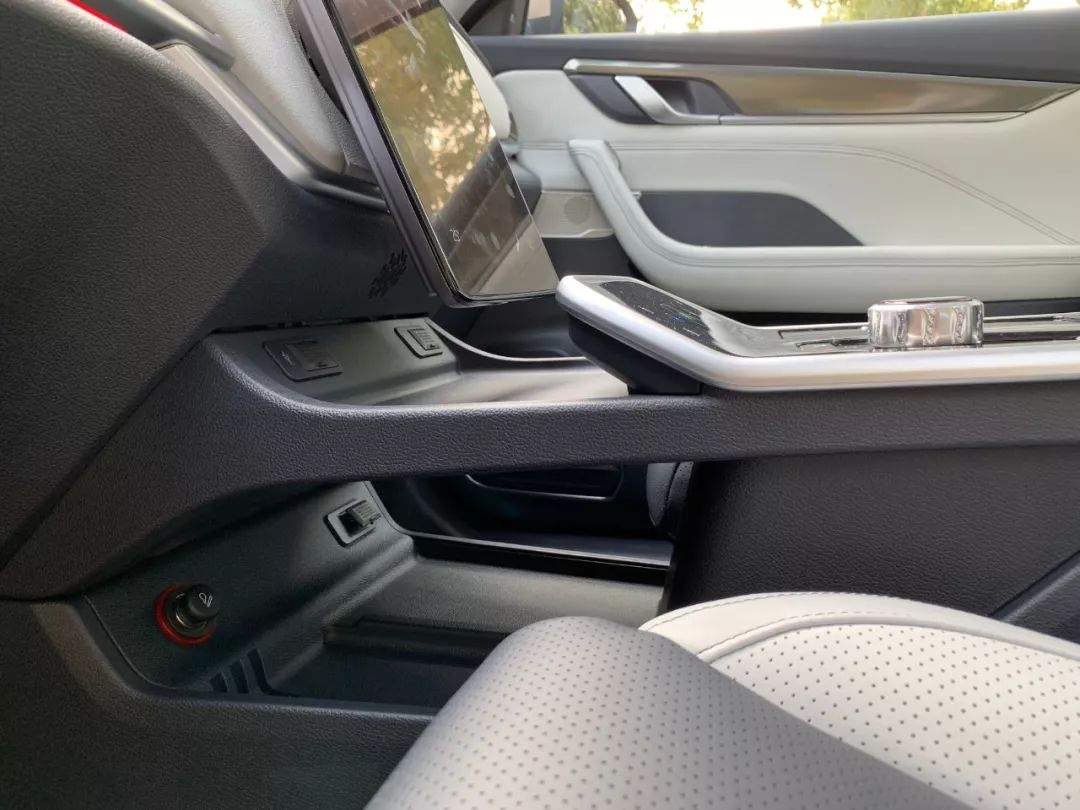
There is a small platform beneath the central control screen that can hold a mobile phone, but it is a bit awkward to reach. There is also an empty storage compartment underneath, and this area can be equipped with wireless charging function. However, the wireless charging position is towards the back, so it may not charge successfully if the phone is not positioned properly, and retrieving it is also inconvenient.
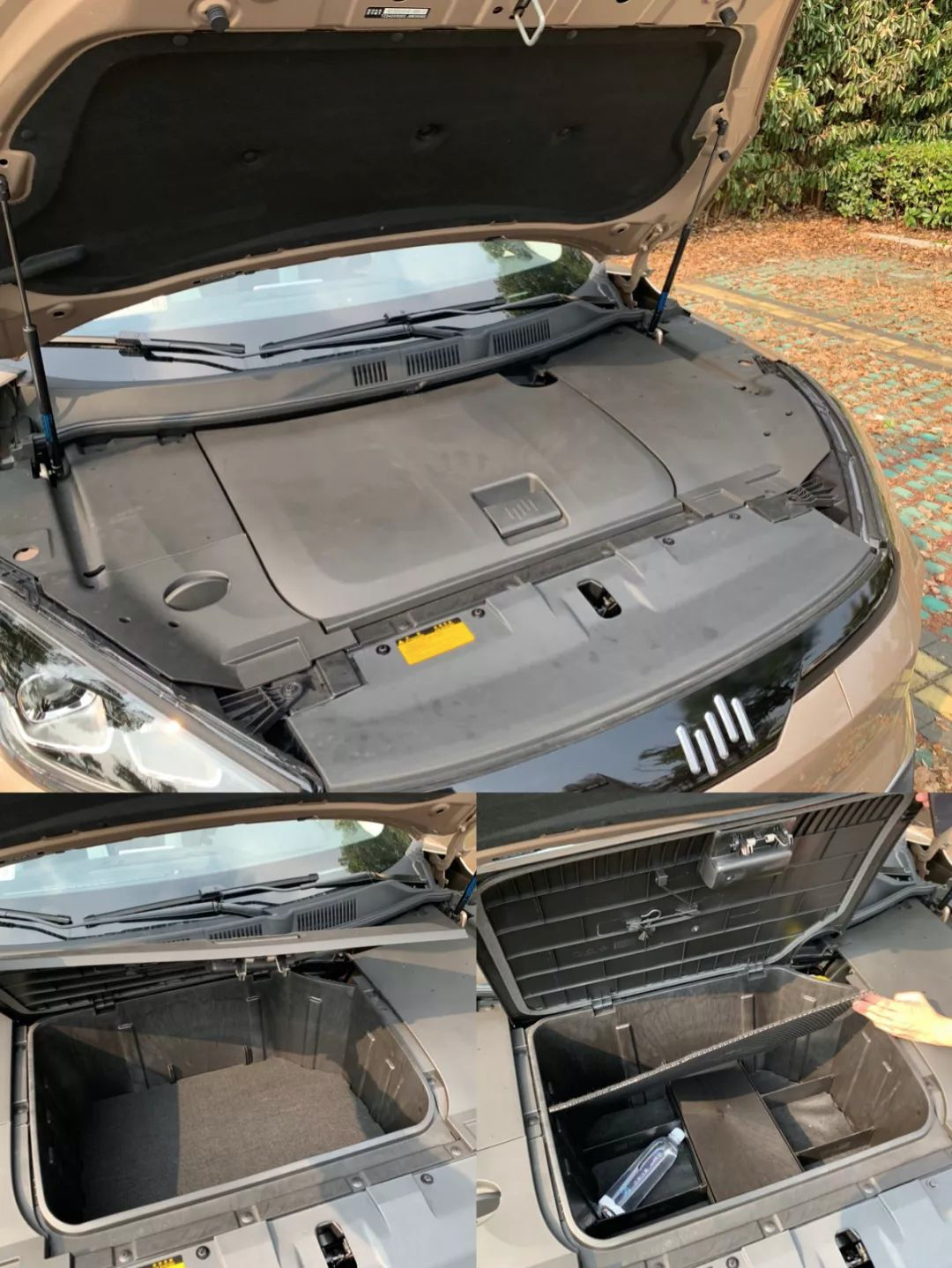
When opening the front hood, everything is very neat and there is also a front trunk. Putting a large backpack inside is not a problem, and there are two layers. There is a partitioned storage compartment beneath the storage board. However, the plastic cover of the front trunk feels a little cheap. When retrieving items, you can only use the rope and hook inside the cover to coordinate with the holes on the machine cover. The cover itself has no damping or support. But on the other hand, having a front trunk itself is already a big plus.
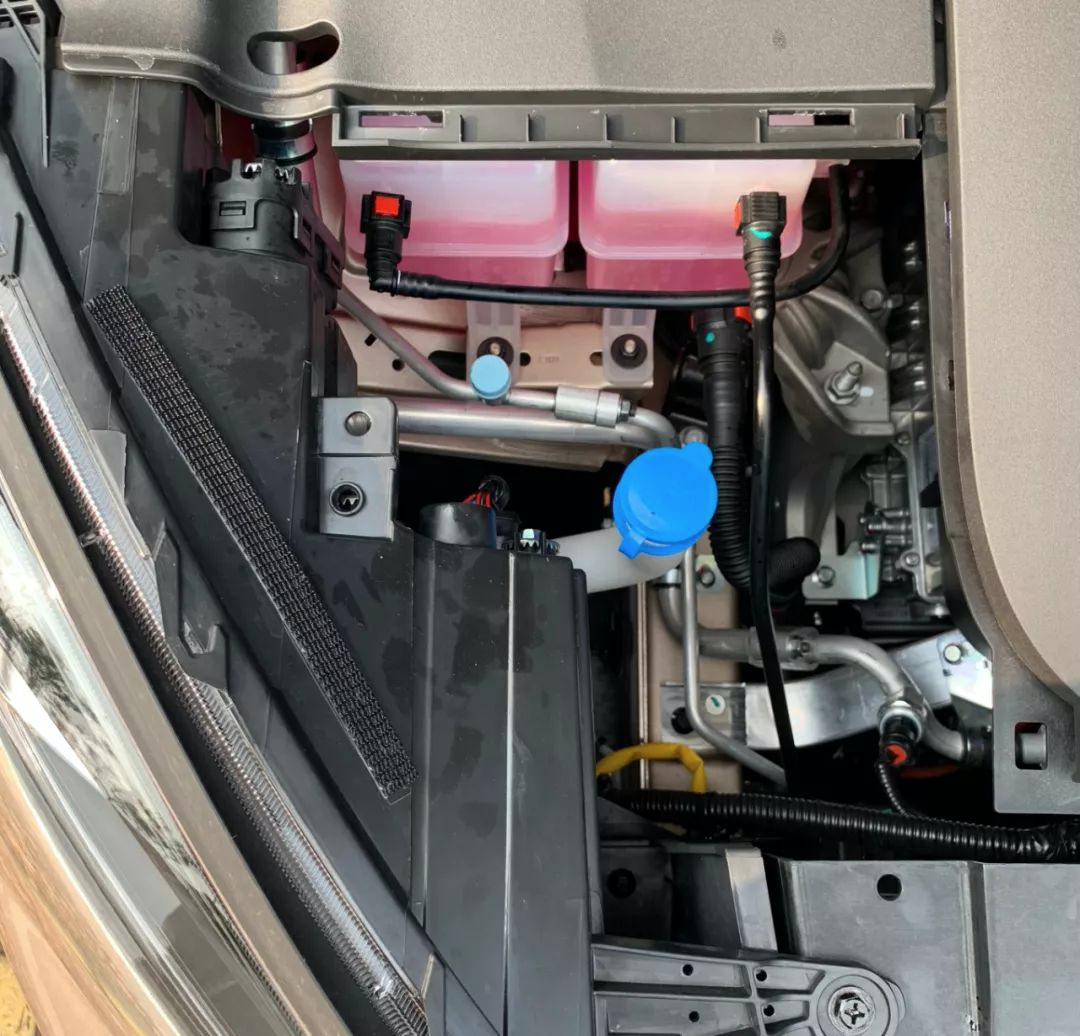
Although electric cars do not need much maintenance, windshield washer fluid still needs to be added. The windshield washer fluid filling port of the WEY EX5 is located near the right vehicle light, and the plastic decorative panel needs to be opened to see it. The plastic decorative panel is fixed with buckles and Velcro.
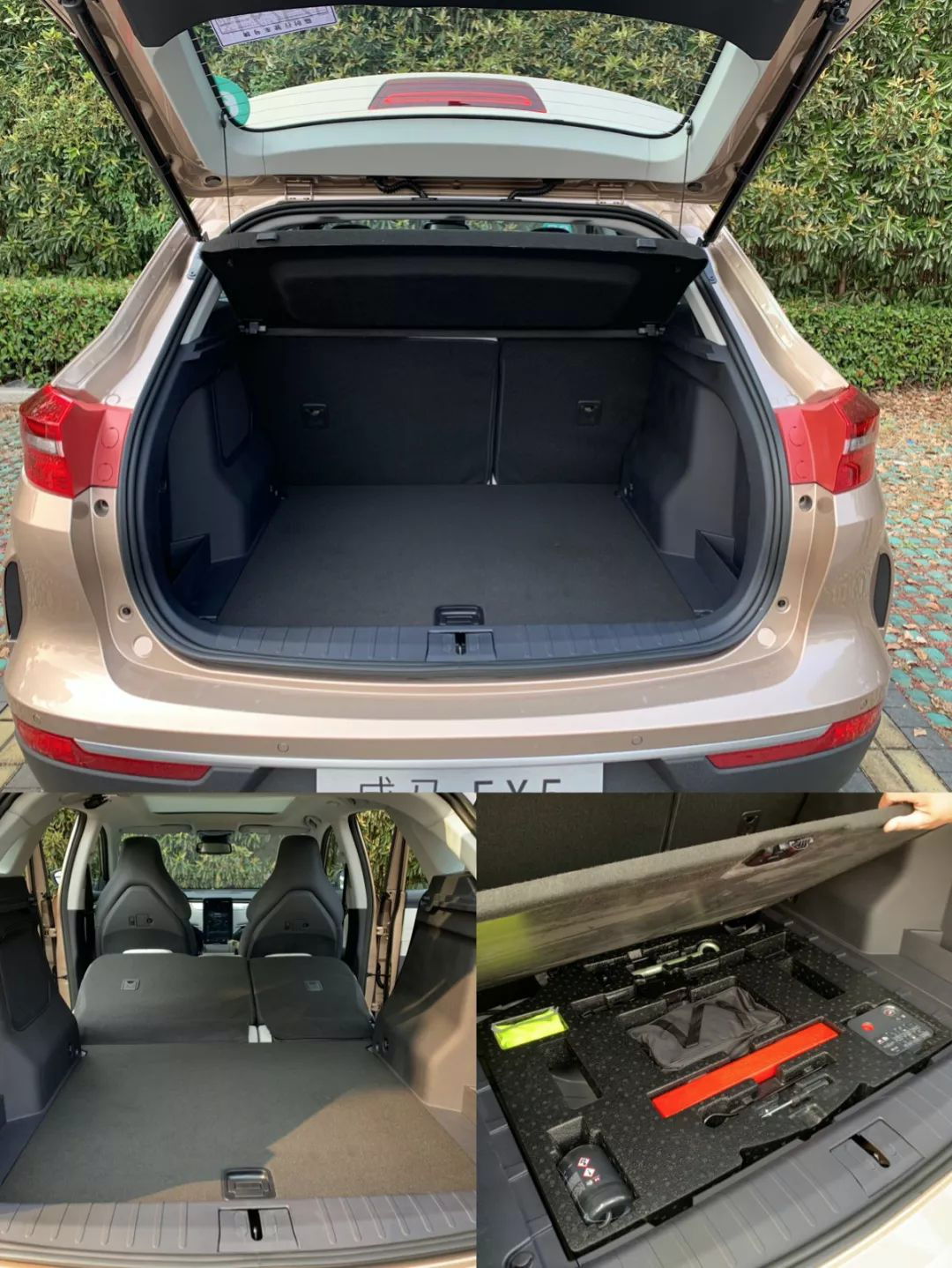
The electric tailgate of the trunk is certain. The size is regular and the space is organized. The rear seats can be folded down in a 4/6 ratio, but there is a certain angle. There is no spare tire below the storage board, and the battery pack only extends to the rear seats. The huge space is only sparsely filled with some tools that come with the car. The space utilization rate is average; you still have a front trunk, so don’t be too demanding.
After pointing out so many trivial flaws of the WEY EX5 above, let’s take a look at how it performs on the road.
I will not go into detail about the three-electric system here. In short, please refer to the article before the 42nd car garage at the end of this article. If you have any questions, please feel free to ask in the comments.
-
The power system employs a permanent magnet synchronous motor with a maximum output of 160 kW and torque of 315 N·m.2. There are three versions of driving range: NEDC 300km (battery capacity of 46 degrees), 400km (battery capacity of 52.5 degrees), and 460km (battery capacity of 57 degrees), and we tested the 400km version this time.
-
The battery uses VDA square ternary lithium battery, with an energy density of 140kWh/kg, which is of a good level.
-
Before 2018, all batteries were from CATL. After 2018, there will be batteries from different suppliers, including CATL, Tianneng Group, and Suzhou Youliang. WM Motor purchases the battery cells and produces the battery packs themselves, so the size of the battery pack depends on WM Motor. Consumers don’t need to worry too much about the battery brand.
-
The battery is liquid-cooled and optional with either electric heating or diesel heating system.
-
Both fast charging and slow charging are available, and 30%-80% can be charged in 30 minutes, while slow charging takes 7.5 hours, 8.5 hours, and 9.2 hours respectively.
I strongly recommend that everyone try driving it in person for power experience because different psychological expectations will bring completely different experiences. From the perspective of a gasoline car user, I would like to talk about the driving experience of the EX5.
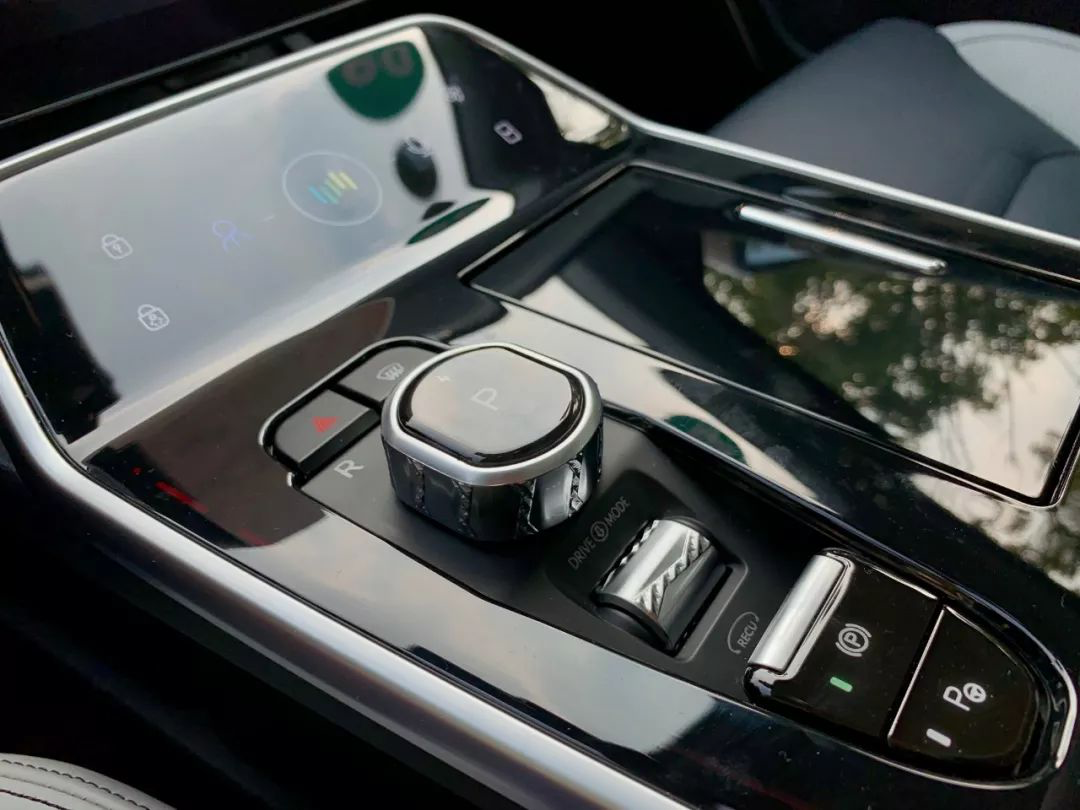
Most electric cars do not have the operation of starting the engine. Once you get in, you can shift gears and go. However, the EX5 still retains this concept and integrates this button with the gear selection. The P on the gear knob is defined by the manufacturer as Power instead of the usual P for Parking. After entering the vehicle, press P is to activate the power and light up the dashboard before shifting the gear to move forward. Similarly, when parking, press P when shifting to D/N/R, then press again to cut off the power.
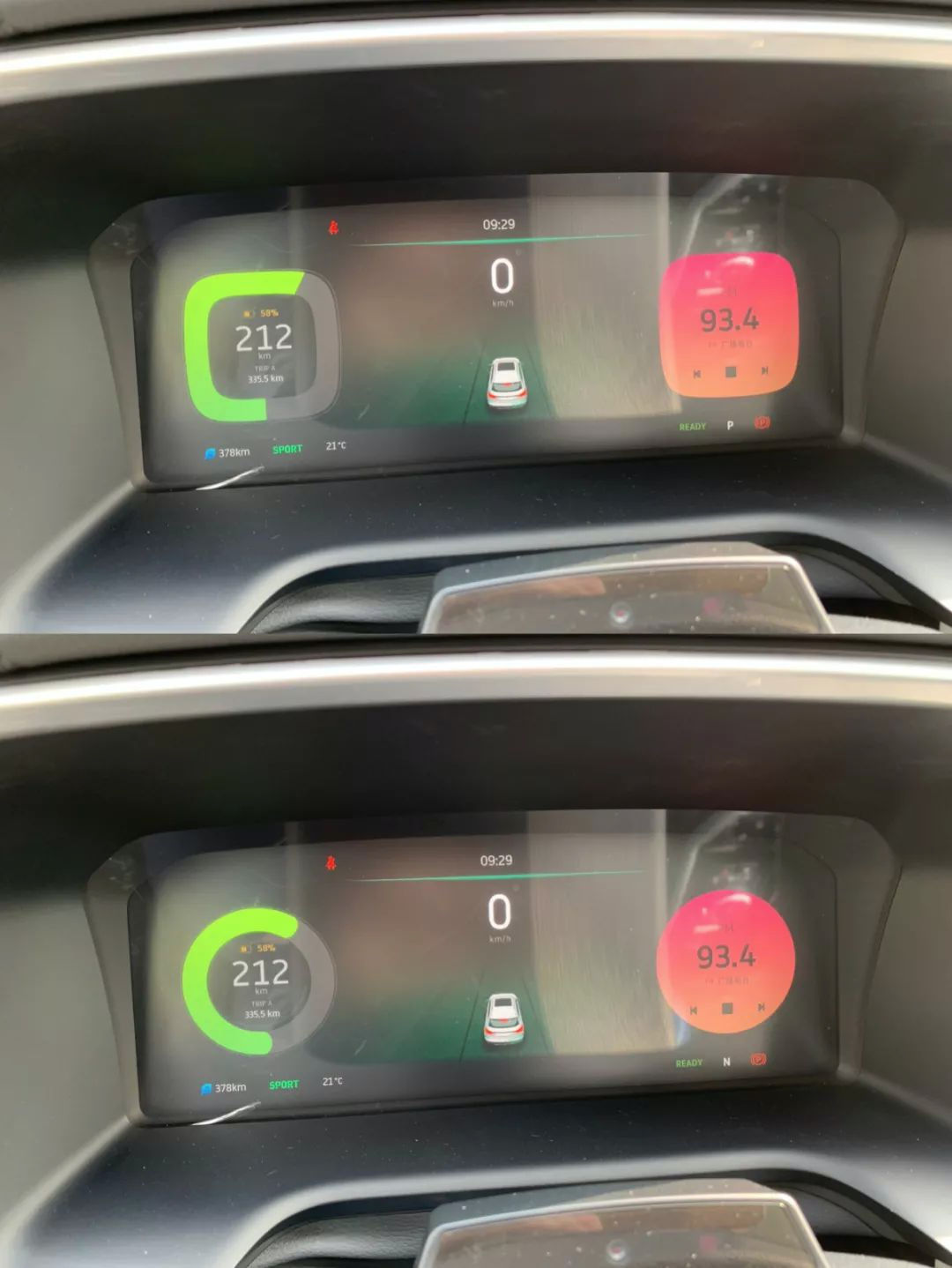
When the vehicle is in the P position, the two main displays on the dashboard are square-shaped. When shifting to the D/N/R position, they become circular. It’s clear at a glance, and I like it very much. The energy bar on the left represents my remaining driving range, the multimedia information is displayed on the right, and the middle is the vehicle driving status. The bottom left displays the kinetic energy recovery level and driving mode.
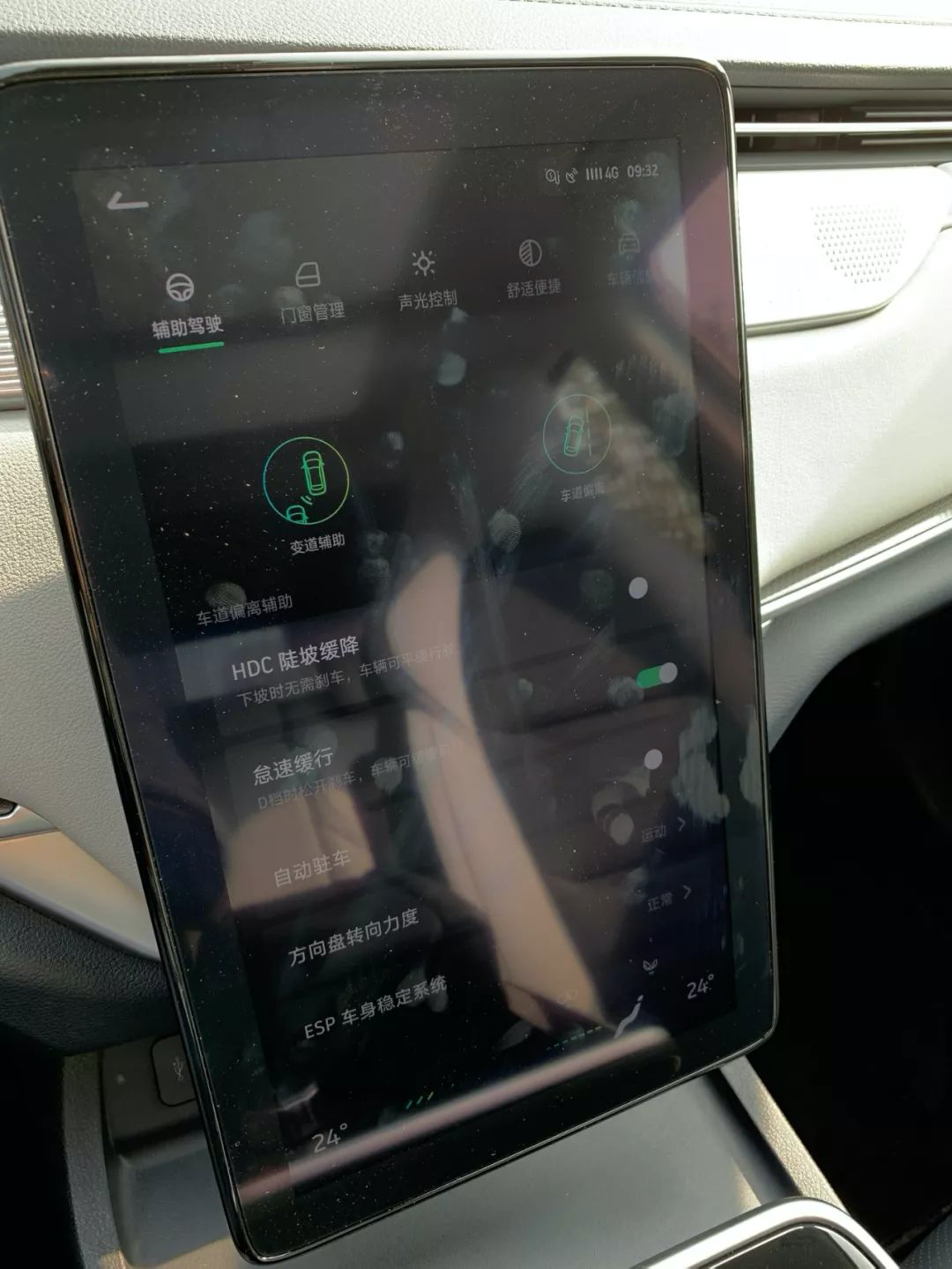
WM Motor also maintains the characteristic of idle speed for gasoline cars, which means that when you release the brake, the vehicle will start moving slowly at a speed of about 7-8 kilometers per hour. Of course, this function can be selected in settings, whether to enable idle speed.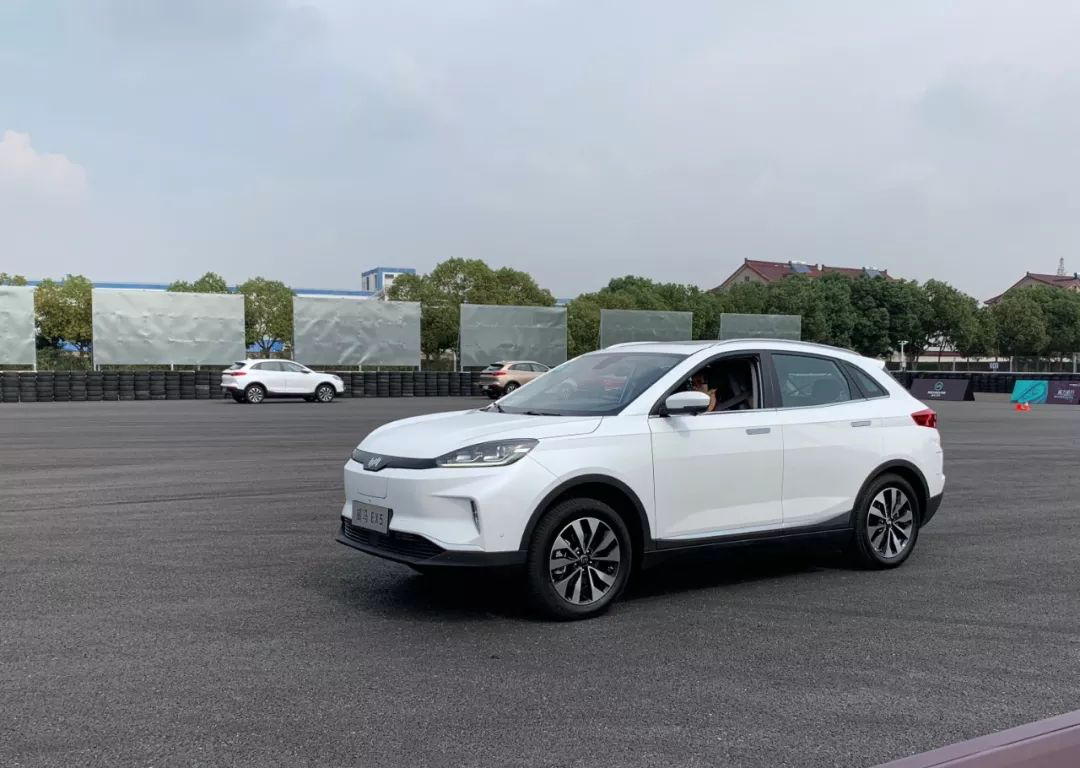
After switching on, the response and output of the power of the electric vehicle is much easier than that of a fuel vehicle. On the one hand, this is due to the characteristics of electric vehicles, which have a large torque at low speeds; on the other hand, the response speed of electric motors is twice as fast as that of fuel cars, so when you drive an electric car with the expectation of a fuel car (pressing the accelerator and feeling the engine revving up and accelerating), you will feel that the power of the electric car comes very quickly. In addition, the noise of WmAuto’s motor is very low, almost negligible, and with the light throttle, it’s easy to drive the car to a relatively fast speed without any feeling.
WmAuto EX5’s throttle is set very comfortably with a little bit of clearance at the front, and the entire step and acceleration process is very linear. In addition, the 160-kilowatt, 315-newton-meter electric motor is sufficient for acceleration and overtaking within the speed limit. It’s completely adequate for normal driving in ECO mode. SPORT mode is more sensitive and aggressive. The only downside is that the resistance of the throttle is too small, and the foot feeling is too light.
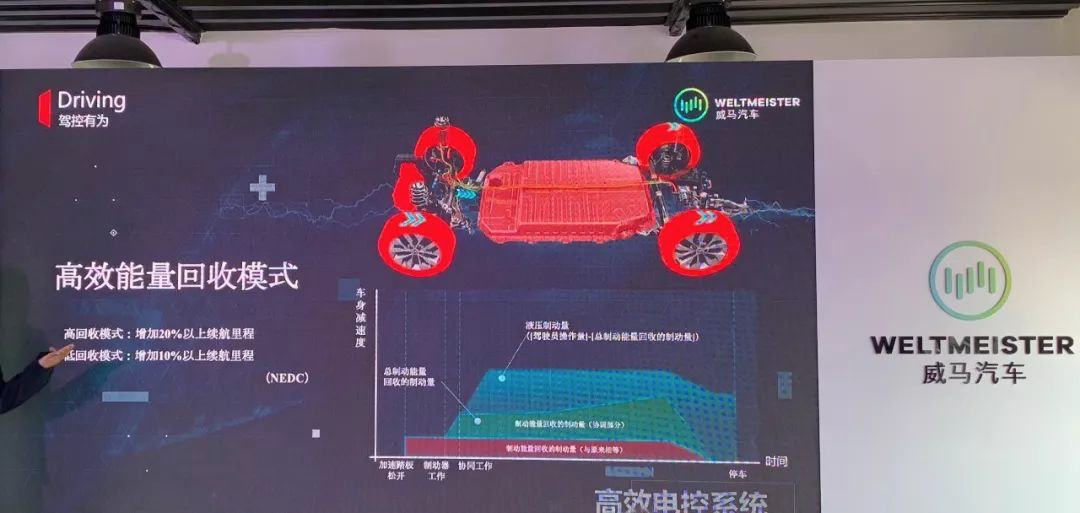
Compared with the excellent throttle, the brake feel of WmAuto EX5 is a bit disappointing. The initial stage of the brake of WmAuto EX5 is kinetic energy recovery, and continues to depress it will engage the mechanical brake. First of all, the kinetic energy recovery in the initial stage of brake feel is not strong, and there is no obvious force. It’s not until the brake is pressed deeper that there is a significant sense of deceleration. The brake feels harder than the light throttle. The back-and-forth switch between accelerator and brake during driving is slightly uncomfortable, and the overall brake feel is stiff. It’s not especially comfortable in situations such as reversing into parking spots and moving cars back and forth.
Now, let’s talk about kinetic energy recovery. There are a total of 3 levels of kinetic energy recovery: off, Level 1, and Level 2. The first two levels are not obvious. When kinetic energy recovery is turned off, releasing the accelerator is like coasting in neutral on a fuel-based car. The Level 1 feeling is not obvious. Although the release of the accelerator will immediately engage, the force is similar to deceleration caused by engine gear restraint. Level 2 is more obvious, but according to the logic calibration, it takes one second or more after releasing the accelerator for it to engage. It produces a significant drag feeling, but the force is not that strong. It’s difficult to achieve single-pedal operation. Moreover, it’s strongly not recommended to use Level 2 kinetic energy recovery frequently for switching frequently between accelerator and brake in congested road conditions, which will make for a very poor riding experience.
The adjustment of kinetic energy recovery is like this, through the rotary knob behind the gear shifter/wheel, press it once to switch between ECO and SPORT modes, roll forward twice to lower the kinetic energy recovery level, and roll back twice to increase the kinetic energy recovery level. The operation is not smooth enough during driving, and it’s difficult to notice the changes in level on the dashboard. However, the manufacturer will optimize this through OTA in the future.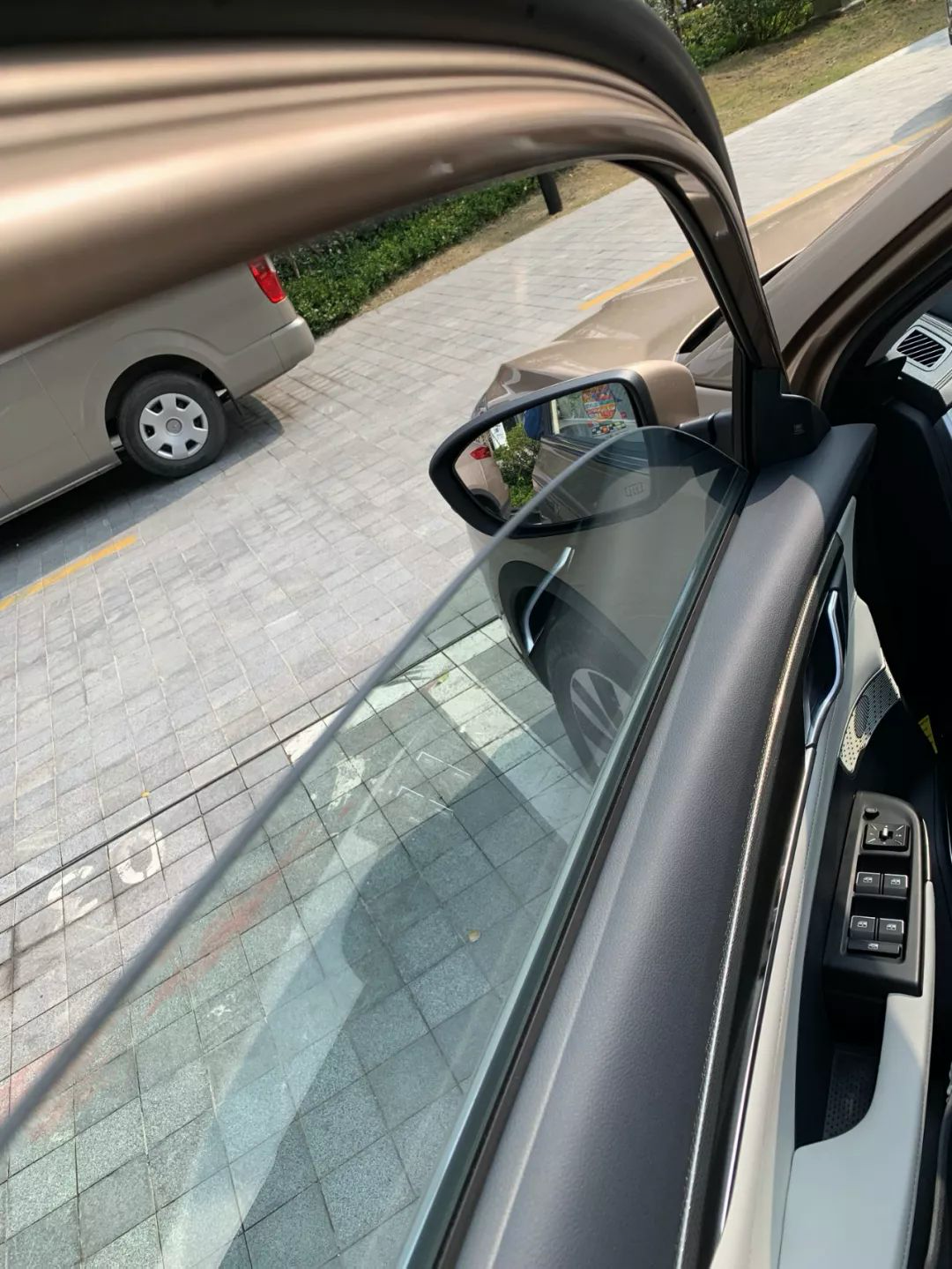
After the entire car is driven, the noise control of the car itself is very good, and it is difficult to feel the existence of the motor. The Michelin Primacy 3ST tires are also very good at controlling tire noise, but since the noise itself is small, external sounds are relatively obvious. Additionally, limited by cost, single-layer glass is used, and after 80 kilometers per hour, wind noise will slowly become noticeable.
The steering feel is light, making normal driving relatively easy. The handling is average, and the suspension is generally on the firmer side, but given the weight of the battery and the overall weight of the car, this level can be accepted.
Regarding range, since the test drive route is not long, and driving styles are varied, we did not record it. If interested, you can refer to the article before garage 42 at the end of this article.

Intelligence
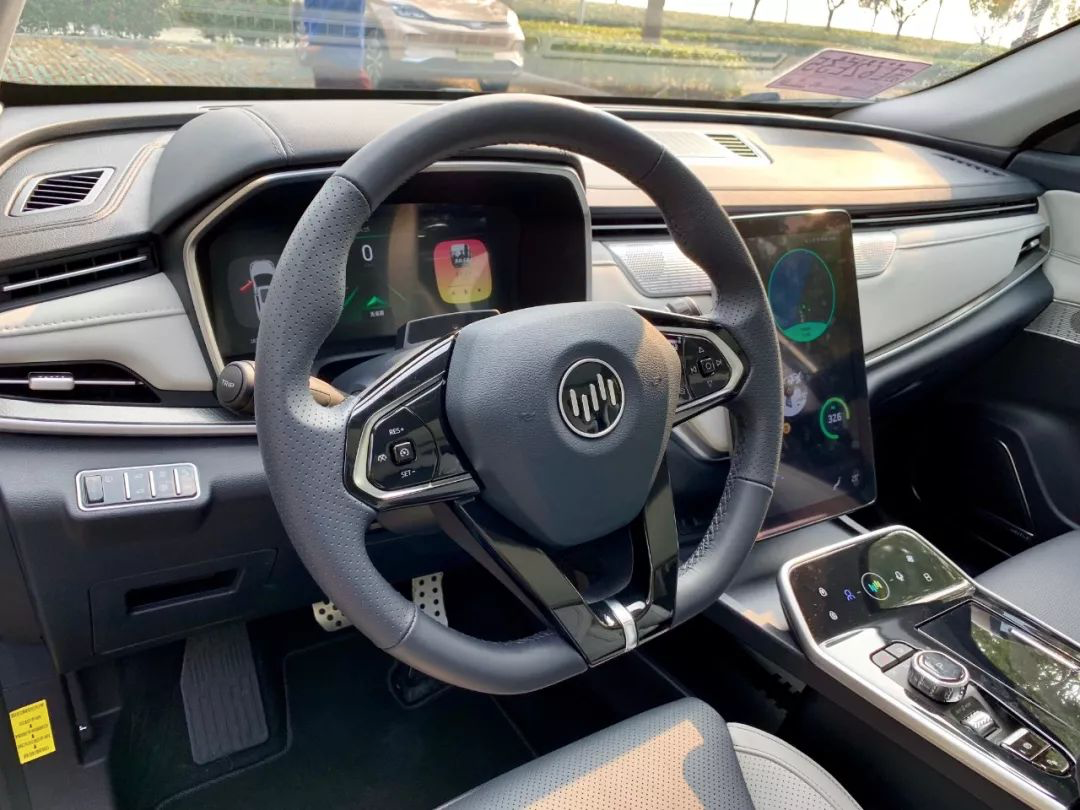
The 12.3-inch instrument panel and 12.8-inch multimedia display inside the car integrate many features. The UI design of the two screens is very beautiful and easy to use, with many interesting features. It is like buying a new electronic product. We did not have enough time and conditions to deeply understand the central control large screen. If there is a chance for a long-term test in the future, we will explain it in detail. Here are some basic points:
-
The car system supports OTA and has lifelong free data traffic. The operator is China Unicom.
-
It integrates the function of a driving recorder, which is very commendable. We hope that in the future all automakers can make this function standard.
-
You can have an exclusive “WM ID,” and under one ID, there can be multiple users. Facial recognition through the camera inside the car judges the identity of the user, and after you get in the car, it will adjust relevant information according to your personal preferences.
-
Because it is an electric car, the owner can use a mobile app to remotely control many functions of the car at any time, and can abandon the car key and use the phone instead.
-
Some apps in the car can be associated with the phone, such as WeChat and Xiaomi Home, but we need to investigate further to evaluate their usefulness.
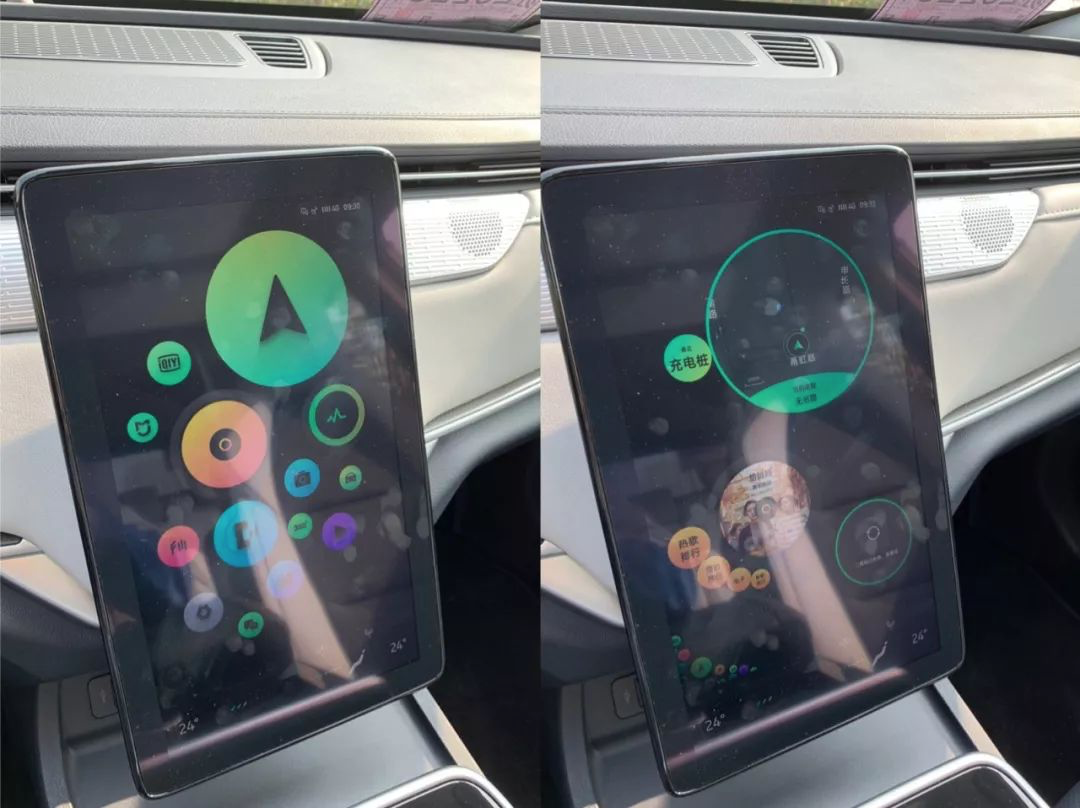 As a member of the first echelon of new energy automobile makers, WM Motor is the first to lower the price. Although there are indeed some issues with the details of the WM EX5, WM has done a great job in the three core aspects of electric vehicles. Moreover, WM leans more towards fuel vehicles in calibration, making it easier for many new electric vehicle users to get started. In terms of the level of intelligence of the vehicle system, the WM EX5 has clearly distinguished itself from traditional cars, and looking back at the price after a subsidy of 140,000 yuan, it is still quite competitive.
As a member of the first echelon of new energy automobile makers, WM Motor is the first to lower the price. Although there are indeed some issues with the details of the WM EX5, WM has done a great job in the three core aspects of electric vehicles. Moreover, WM leans more towards fuel vehicles in calibration, making it easier for many new electric vehicle users to get started. In terms of the level of intelligence of the vehicle system, the WM EX5 has clearly distinguished itself from traditional cars, and looking back at the price after a subsidy of 140,000 yuan, it is still quite competitive.
Now what I am concerned about is the capacity ramp-up of WM and the corresponding sales and service system. I hope that WM will not let consumers down and will serve them diligently.
This article is a translation by ChatGPT of a Chinese report from 42HOW. If you have any questions about it, please email bd@42how.com.
